

By S. J. Chander
IDN-InDepth NewsAnalysis
TORONTO (IDN) - When heads of government and state meet at the United Nations in New York from September 20-22 to review progress, assess obstacles and gaps, and agree on concrete strategies and actions to meet the eight Millennium Development Goals by 2015, they will not have much reason to rejoice.
Giving an overview of The Millennium Development Goals Report 2010, Sha Zukang, UN Under-Secretary-General for Economic and Social Affairs, says: "Though progress has been made, it is uneven. And without a major push forward, many of the MDG targets are likely to be missed in most regions. Old and new challenges threaten to further slow progress in some areas or even undo successes achieved so far."
The significance of Sha's assessment lies in the fact that he heads the Department of Economic and Social Affairs, which is responsible for the follow-up to the major United Nations Summits and Conferences and services the Second and Third Committees of the General Assembly, the Economic and Social Council as well as the vast majority of its functional commissions and expert bodies. He also convenes the Executive Committee on Economic and Social Affairs, the UN Secretariat's network for joint planning and initiatives on development.
Sha, a Chinese career diplomat, refers to specific aspects MDGs without mincing words.
The most severe impact of climate change, he points out, is being felt by vulnerable populations who have contributed least to the problem. The risk of death or disability and economic loss due to natural disasters is increasing globally and is concentrated in poorer countries.
Sha refers to an often ignored aspect, saying that armed conflict remains a major threat to human security and to hard-won MDG gains. Large populations of refugees remain in camps with limited opportunities to improve their lives. In 2009, 42 million people had been displaced by conflict or persecution, four fifths of them in developing countries.
The number of people who are undernourished has continued to grow, while slow progress in reducing the prevalence of hunger stalled -- or even reversed itself -- in some regions between 2000-2002 and 2005-2007.
About one in four children under the age of five are underweight, mainly due to lack of food and quality food, inadequate water, sanitation and health services, and poor care and feeding practices.
An estimated 1.4 billion people were still living in extreme poverty in 2005. Moreover, the effects of the global financial crisis are likely to persist: poverty rates will be slightly higher in 2015 and even beyond, to 2020, than they would have been had the world economy grown steadily at its pre-crisis pace.
"Gender equality and the empowerment of women are at the heart of the MDGs and are preconditions for overcoming poverty, hunger and disease. But progress has been sluggish on all fronts -- from education to access to political decision-making," the UN Under-Secretary-General warns.
Because achieving the MDGs will also require increased attention to those most vulnerable, policies and interventions will be needed to eliminate the persistent or even increasing inequalities between the rich and the poor, between those living in rural or remote areas or in slums versus better-off urban populations, and those disadvantaged by geographic location, sex, age, disability or ethnicity:
Other points in Sha's incisive overview of the report, which should draw the focus of the civil society and media, are:
- In all developing regions, children in rural areas are more likely to be underweight than urban children. In Latin America and the Caribbean and parts of Asia, this disparity increased between 1990 and 2008.
- The gap between the richest and the poorest households remains enormous. In Southern Asia, 60 per cent of children in the poorest areas are underweight compared to 25 per cent of children in the richest households.
- In developing regions overall, girls in the poorest 20 per cent of households are 3.5 times more likely to be out of school than girls in the richest households and four times more likely to be out of school than boys from the richest households.
- Even in countries close to achieving universal primary education, children with disabilities are the majority of those excluded.
- Maternal health is one of the areas in which the gap between rich and poor is most conspicuous. While almost all births are attended by skilled health personnel in the developed countries, less than half of women receive such care when giving birth in parts of the developing world.
- Disparities in access to care during pregnancy are also striking, with women in the richest households 1.7 times more likely to visit a skilled health worker at least once before birth than the poorest women.
- Lack of education is another major obstacle to accessing tools that could improve people’s lives. For instance, poverty and unequal access to schooling perpetuate high adolescent birth rates, jeopardizing the health of girls and diminishing their opportunities for social and economic advancement.
- Contraceptive use is four times higher among women with a secondary education than among those with no education. For women in the poorest households and among those with no education, negligible progress was seen over the last decade.
- Only about half of the developing world's population are using improved sanitation, and addressing this inequality will have a major impact on several of the MDGs. Disparities between rural and urban areas remain daunting, with only 40 per cent of rural populations covered. And while 77 per cent of the population in the richest 20 per cent of households use improved sanitation facilities, the share is only 16 per cent of those in the poorest households.
However looking beyond as things look like today, he sets an eye on 2015, adding a positive note: "The Millennium Development Goals are still attainable. The critical question today is how to transform the pace of change from what we have seen over the last decade into dramatically faster progress."
"The experience of these last ten years offers ample evidence of what works and has provided tools that can help us achieve the MDGs by 2015," he adds. With this in view, the MDG summit in September should be an opportunity for world leaders to translate the evidence -- collected by the representatives of international organization -- into a concrete agenda for action.
After all, the 2000 Millennium Declaration represents the most important promise ever made to the world's most vulnerable people. Says Sha: "The MDG framework for accountability derived from the Declaration has generated an unprecedented level of commitment and partnership in building decent, healthier lives for billions of people and in creating an environment that contributes to peace and security."
-- This is the first in a series of articles on MDGs in run-up to the UN summit in September. (IDN-InDepthNews/09.08.2010)
Copyright © 2010 IDN-InDepthNews | Analysis That Matters



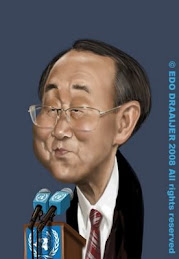












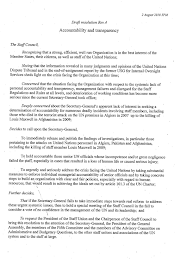


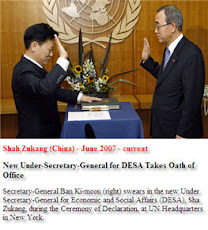
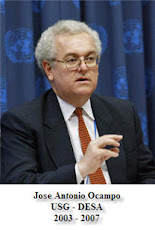
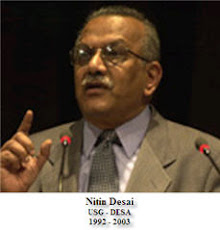
No comments:
Post a Comment